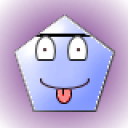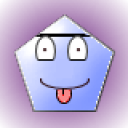... and then there is this ... I think this may be it!!...
" In Rabbinical Literature:
The word "teraphim" is explained by the Rabbis as meaning "disgraceful things" (Yer. 'Ab. Zarah ii. 41b; Tan., Wayeẓe). It is rendered "ẓalmanaya" or "ẓilmanaya" (= "images") by the Targumim of Onḳelos and pseudo-Jonathan to Gen. xxxi. 19, 34, and by the Targum of Jonathan in the other parts of the Bible, except in connection with the image of Micah (Judges xvii. 5; xviii. 14, 18, 20), where it is rendered "dema'in" (= "likenesses"). The nature of the teraphim is much discussed by ancient commentators. According to Targ. pseudo-Jonathan to Gen. xxxi. 19, the teraphim were made of the head of a man, a first-born, which, after the man had been slain, was shaved and then salted and spiced. After a golden plate on which magic words were engraved had been placed under the tongue, the mummified head was mounted on the wall, and it spoke to the people. This legend is more fully developed in Pirḳe R. El. xxxvi., where it is said that after the head had been displayed on the wall, lighted candles were placed round it; the people then prostrated themselves before it, and it talked to them.
Ibn Ezra (on Gen. l.c.) records two definitions of "teraphim"; namely, (1) a copper dial by means of which one might ascertain the exact time, and (2) an image made by astrologers at a certain time and under the influence of certain stars, which caused it to speak. Ibn Ezra himself favored the latter interpretation, it appearing from I Sam. xix. 13, 16 that the teraphim had the shape of a man. Naḥmanides (on Gen. l.c.), however, thinks that while the teraphim of Laban might have been idols, those of I Sam. l.c. were not, inasmuch as there could have been no idols in David's house. He thinks that in general teraphim were astrological tables by means of which one might learn future events (comp. Ḳimḥi on I Sam. l.c.). The "Sefer ha-Yashar" (section "Wayeẓe," pp. 46b-47a, Leghorn, 1870), after having repeated the description which Pirḳe R. Eliezer gives of the teraphim, declares that they were made of gold or silver, in the image of a man and at a certain moment, and that by the influence of the stars they revealed the future. It adds that the teraphim of Laban were of the latter description.
FROM>>>
http://www.jewishencyclopedia.com/articles/14331-teraphim
 modux
modux
 lindilou
lindilou
 Benthere
Benthere
 Ducky
Ducky
 nomdeplume
nomdeplume
 terryfossil 1
terryfossil 1
 flabelg
flabelg
 leonaslaertes
leonaslaertes





" In Rabbinical Literature:
The word "teraphim" is explained by the Rabbis as meaning "disgraceful things" (Yer. 'Ab. Zarah ii. 41b; Tan., Wayeẓe). It is rendered "ẓalmanaya" or "ẓilmanaya" (= "images") by the Targumim of Onḳelos and pseudo-Jonathan to Gen. xxxi. 19, 34, and by the Targum of Jonathan in the other parts of the Bible, except in connection with the image of Micah (Judges xvii. 5; xviii. 14, 18, 20), where it is rendered "dema'in" (= "likenesses"). The nature of the teraphim is much discussed by ancient commentators. According to Targ. pseudo-Jonathan to Gen. xxxi. 19, the teraphim were made of the head of a man, a first-born, which, after the man had been slain, was shaved and then salted and spiced. After a golden plate on which magic words were engraved had been placed under the tongue, the mummified head was mounted on the wall, and it spoke to the people. This legend is more fully developed in Pirḳe R. El. xxxvi., where it is said that after the head had been displayed on the wall, lighted candles were placed round it; the people then prostrated themselves before it, and it talked to them.
Ibn Ezra (on Gen. l.c.) records two definitions of "teraphim"; namely, (1) a copper dial by means of which one might ascertain the exact time, and (2) an image made by astrologers at a certain time and under the influence of certain stars, which caused it to speak. Ibn Ezra himself favored the latter interpretation, it appearing from I Sam. xix. 13, 16 that the teraphim had the shape of a man. Naḥmanides (on Gen. l.c.), however, thinks that while the teraphim of Laban might have been idols, those of I Sam. l.c. were not, inasmuch as there could have been no idols in David's house. He thinks that in general teraphim were astrological tables by means of which one might learn future events (comp. Ḳimḥi on I Sam. l.c.). The "Sefer ha-Yashar" (section "Wayeẓe," pp. 46b-47a, Leghorn, 1870), after having repeated the description which Pirḳe R. Eliezer gives of the teraphim, declares that they were made of gold or silver, in the image of a man and at a certain moment, and that by the influence of the stars they revealed the future. It adds that the teraphim of Laban were of the latter description.
FROM>>>http://www.jewishencyclopedia.com/articles/14331-teraphim